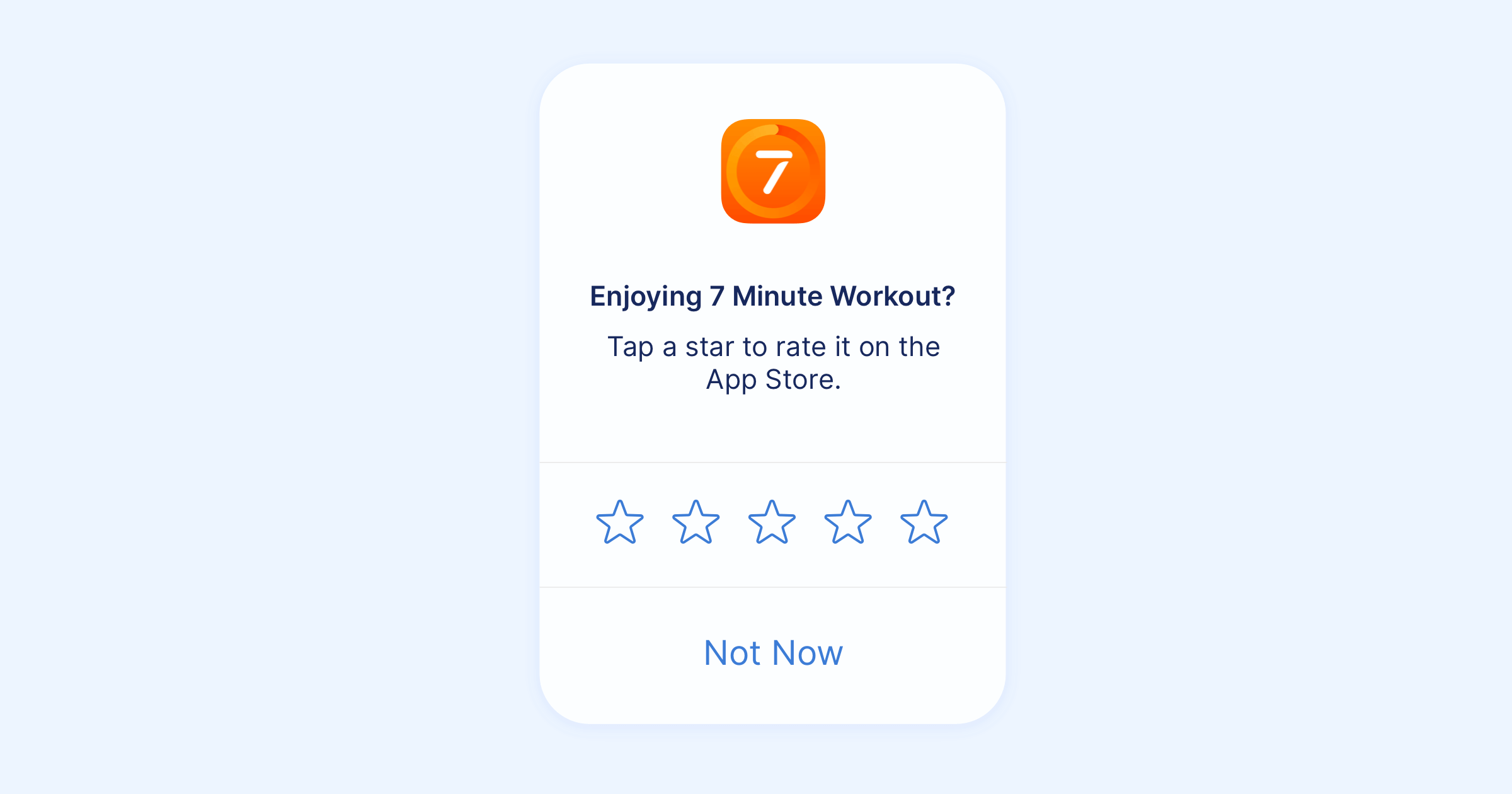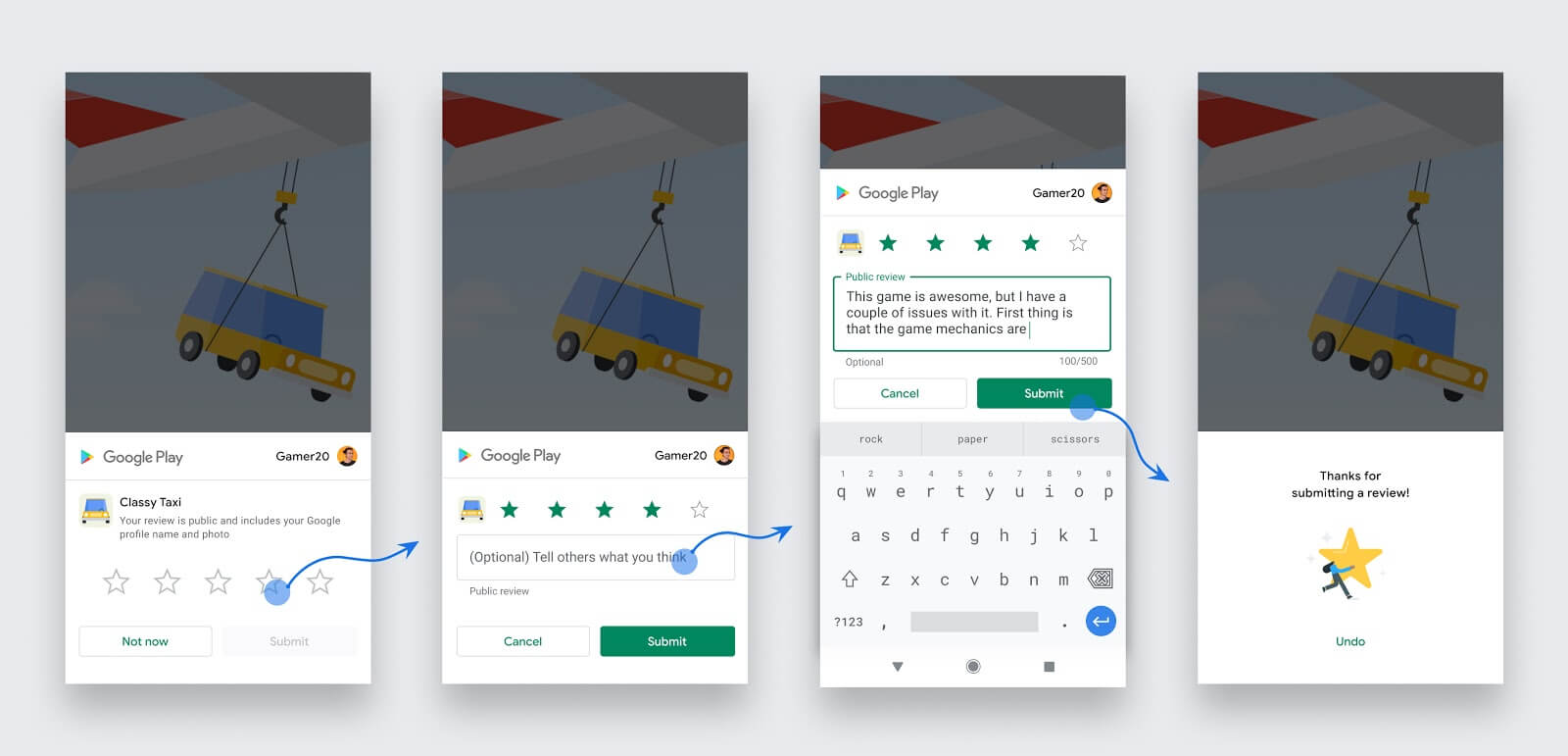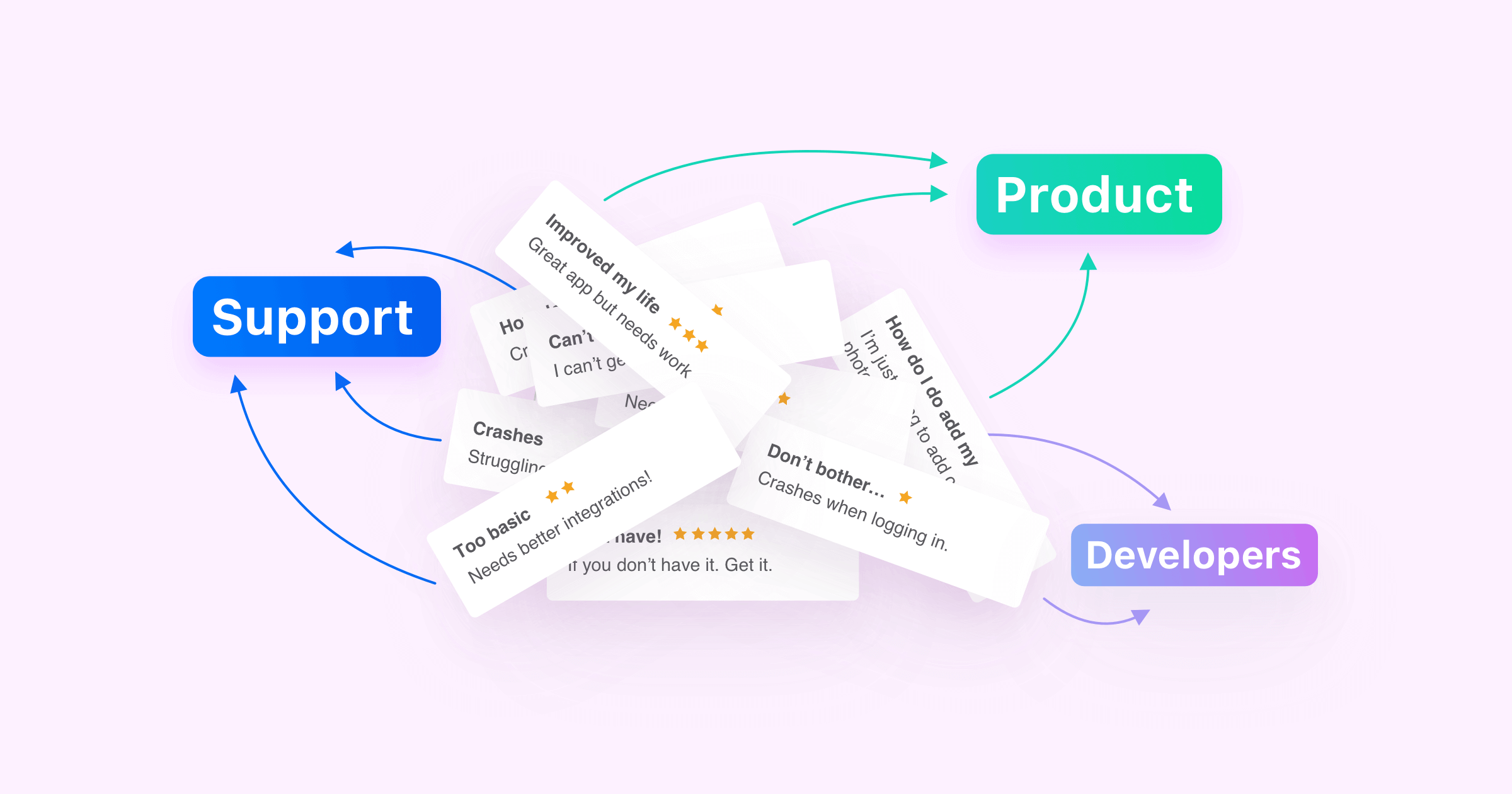Prompting for app reviews and ratings on iOS and Android
Published 30th September, 2020 by Stuart Hall We are often asked about prompting for reviews and ratings for mobile apps. Google and Apple are both very open about the importance of reviews and ratings to the success of a mobile app and how they are a significant signal for ranking algorithms.
We are often asked about prompting for reviews and ratings for mobile apps. Google and Apple are both very open about the importance of reviews and ratings to the success of a mobile app and how they are a significant signal for ranking algorithms. In this overview you'll learn:
Want to monitor & track your app reviews?
Try Appbot free now, no credit card needed →The following is our advice after talking to thousands of mobile app developers on the best techniques for prompting for reviews and ratings on iOS and Android.
When to prompt
Apple share some great tips on when to prompt for reviews and ratings.Specifically:
- Ask for a rating only after the user has demonstrated engagement with your app. For example, prompt the user upon the completion of a game level or productivity task. Never ask for a rating on first launch or during onboarding. Allow ample time to form an opinion.
- Don't interrupt the user, especially when they're performing a time-sensitive or stressful task. Look for logical pauses or stopping points, where a rating request makes the most sense.
- Don't be a pest. Repeated rating prompts can be irritating, and may even negatively influence the user's opinion of your app. Allow at least a week or two between rating requests and only prompt again after the user has demonstrated additional engagement with your app.
Prompting on iOS
Apple strongly encourage you to use their method of prompting for reviews and ratings. In my experience it's extremely effective so I would recommend going with their library.
Their library SKStoreReviewController is very simple to use.
SKStoreReviewController.requestReview()
One thing to keep in mind is the prompt can only displayed to a user a maximum of three times within a 365-day period. That means that it might not be shown every time you request it to be shown.
Apple have an excellent example of not showing the prompt until the user is really engaged.
I like to hand craft when the rating prompt will be shown, but if you'd like something that wraps up much of the functionality for you then I recommend checking out Appirater.
If you'd like to add a button to ask for a review (say on your Settings screen) then Apple provide a way to deep link:
@IBAction func requestReviewManually() {
// Note: Replace the XXXXXXXXXX below with the App Store ID for your app
// You can find the App Store ID in your app's product URL
guard let writeReviewURL = URL(string: "https://apps.apple.com/app/idXXXXXXXXXX?action=write-review")
else { fatalError("Expected a valid URL") }
UIApplication.shared.open(writeReviewURL, options: [:], completionHandler: nil)
}

Prompting on Android
Android has recently introduced a native prompt as well.
Android also limit the number of times the prompt can be shown, but they aren't specific around what the limits are.
The API is very simple to use and there is great sample code for a variety of languages.
val manager = ReviewManagerFactory.create(context)
val request = manager.requestReviewFlow()
request.addOnCompleteListener { request ->
if (request.isSuccessful) {
// We got the ReviewInfo object
val reviewInfo = request.result
} else {
// There was some problem, continue regardless of the result.
}
}
val flow = manager.launchReviewFlow(activity, reviewInfo)
flow.addOnCompleteListener { _ ->
// The flow has finished. The API does not indicate whether the user
// reviewed or not, or even whether the review dialog was shown. Thus, no
// matter the result, we continue our app flow.
}

Conclusion
It's been widely proven that prompting for reviews and ratings on Android and iOS is extremely effective. With such easy and efficient libraries provided by the major platforms there is no excuse to delay adding in a prompt.
Want to monitor & track your app reviews?
Try Appbot free now, no credit card needed →Where to from here?
- Automate your app store review responses with intelligent AI replies.
- Integrate Appbot's app store review API to efficiently handle and analyze user feedback.
- Reply to app store reviews on the Apple and Google Play stores for happier customers and better star ratings.
- Explore the benefits of slack app store integration or seamless communication and review tracking.
About The Author

Stuart is Co-founder & Co-CEO of Appbot. Stuart has been involved in mobile as a developer, blogger and entrepreneur since the early days of the App Store. He built the 7 Minute Workout app in one night and blogged the story of growing the app to 2.3 million downloads before exiting to a large fitness device company. Previously he was the co-founder of the Discovr series of applications which achieved over 4 million downloads. You can connect with him on LinkedIn.
Enjoying the read? You may also like these
 5 tips for managing app store reviews and ratings
5 tips for managing app store reviews and ratings Excellence in app store review management is key when it comes to making apps more useful, beautiful & profitable. See our tips to manage reviews effectively.
Are App Store subscriptions better than one-off in-app purchases? Read about our subscription pricing experiments to the first $1k in MRR.
5-star review replies should be formed part of the business app reply strategy. Learn what makes up the components of an exceptional 5-star review reply.
When an app has a low rating, it can have a number of negative consequences for both the app developer and the users of the app.


